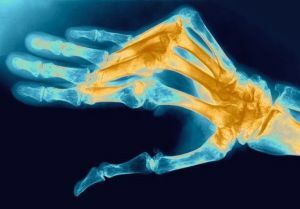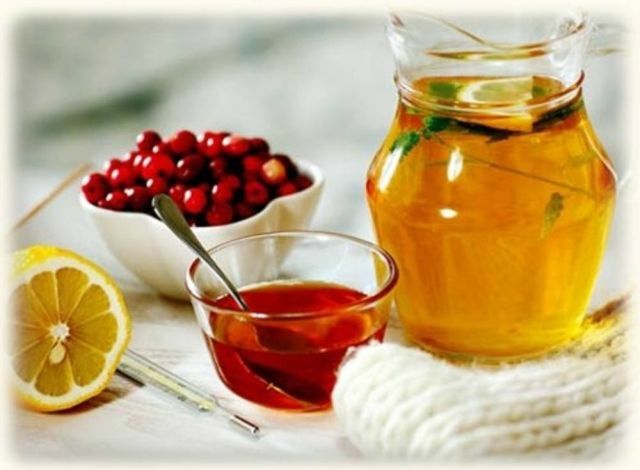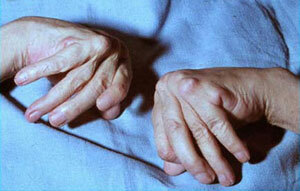 Diseases of joints are most dangerous for a person, since eventually lead to partial or complete immobility and, as a consequence, disability.
Diseases of joints are most dangerous for a person, since eventually lead to partial or complete immobility and, as a consequence, disability.
Rheumatoid polyarthritis is no exception. People who already have the disease diagnosed complain of pain and inability to perform ordinary household activities.
What are the causes of such manifestations?
Contents of the article
- Concept and characteristics of the disease
- How to recognize the disease?
- Causes and risk factors
- Symptoms and development of the disease
- Diagnosis in a medical institution
- Treatment of a disease
- Traditional medicine
- Rehabilitation and prevention
Concept and characteristics of the disease
Rheumatoid polyarthritis is characterized by a lesion of connective tissue of the joints, which, if untimely, leads to a deterioration in the form of lesionsbones.
The prefix "poly" speaks of the defeat of connective tissue in several places at once. In most cases, the joints of the hands and toes of the feet are affected.
The pathology of connective tissue is noted in almost half of the cases of diagnosed problems with the sites of "joints" of bones.
A feature of rheumatoid polyarthritis is the constant stay of the disease in the remission stage and only with occasional exacerbations.
Such periods bring a lot of pain and suffering to a person, so it is important to consult a doctor even at the initial stages of manifestation of the disease.
How to recognize the disease?
Quite often, the presented disease is taken for rheumatic or rheumatoid arthritis. 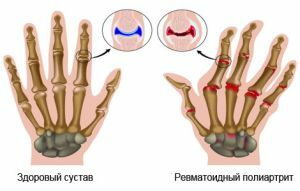
Of course, only a doctor can determine the nature of the illness after a thorough and comprehensive examination. However, the patient himself can understand what kind of disease it manifests. So, distinguish the following differences.
The difference between rheumatoid arthritis and polyarthritis is in the number of affected joints. As a rule, arthritis characterizes the defeat of only one and a large joint.
Differences in rheumatoid and rheumatic polyarthritis are implicated in the nature of the course of the disease.
In rheumatic polyarthritis in the initial stages of the manifestations, the patient suffers more from inflammation and stiffness. Pain occurs in one joint and gradually "transitions" to the other.
Treatment of rheumatic polyarthritis leads to a complete restoration of damaged joints, regardless of the stage of the disease, during which medical intervention was nevertheless performed.
In addition, treatment for rheumatic fever begins with a course of antibiotics to kill the infection in the human body, as well as non-steroidal anti-inflammatory drugs.
Causes and risk factors
The causes of the disease include several aspects, which are divided into three main groups:
- The autoimmune nature of is the onset of the disease. Human immunity reliably protects against the entry of viral infections into the body through regular production of antibodies. Sometimes antibodies "overdo" in their work and affect healthy organs and tissues. This happens through active actions at the time of infection. As a result, rheumatoid polyarthritis can occur after an infectious disease.

- Hereditary factors .Rheumatoid polyarthritis belongs to hereditary diseases. With modern medicine, a newly born baby can reveal predisposition to the presented manifestations. Scientists have identified a separate gene, in the study of which a certain "arming" of young parents appears. Of course, such studies are not carried out at an early age of the child, and the disease itself manifests itself as external factors influence - hypothermia, trauma and bruises.
- The environmental factors should be singled out as a separate category, where there are: hypothermia, exposure to allergens, bad habits, injuries and stresses.
People should be careful especially if close relatives have problems described. You should protect yourself from cold and injuries. Smokers or people who abuse alcohol are also at risk.
Symptoms and development of the disease
Symptoms of rheumatoid polyarthritis appear gradually and depend on the development of the disease.
There are 3 stages:
- Morning with partial loss of the "function" of the compression. The initial stage of the disease is characterized by the defeat and destruction of connective tissue, which leads to joint stiffness.
- Further in a person develops severe pain with each movement of the affected joints .This indicates the beginning of the destruction of the synovial membrane. At the same time, a person's body temperature rises slightly, and skin lesions occur in the areas of the affected joints. There is redness, "baldness".
- Inflammation of the joints speaks about the development of bone erosion. Under erosion is meant the inflammation of the synovial membrane, which no longer protects the bones, which leads to their further destruction.
It should be noted that affected by erosion of the bone is no longer subject to complete recovery, so you should not postpone the visit to the doctor already at the first manifestations of the disease.
Diagnostics in a medical institution
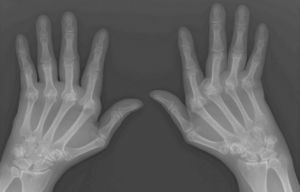
On a photo rheumatoid polyarthritis of the hands
Diagnosis of the disease occurs quite simply and quickly. Here the doctor conducts a small test - compresses the hands. As a rule, the patient has pain - it signals the onset of the inflammatory process.
But the fault diagnosis does not end with one test.
A thorough examination is carried out here, which includes the following procedures:
- X-ray is an important study that identifies the disease;
- Ultrasound of internal organs - the erosion that started begins with complications in the form of lesions of internal organs;
- Other laboratory tests - blood test, urine and other types of tests.
In some cases, when the doctor can not determine the degree of complications of the X-ray, MRI is performed, which will accurately tell about the degree and severity of joint damage.
Treatment of the disease
Traditional treatment of rheumatoid polyarthritis for all joints is carried out in three stages:
- At the initial stage, pain should be eliminated and the erosion started. For these purposes, take various hormonal and non-steroidal anti-inflammatory drugs .
- Once the destruction of the tissues and joints has stopped - pains ceased and there is no worsening of the condition -
 is accepted for permissible recovery of the affected joints. Here various physiotherapeutic procedures are used - phonophoresis, ultraviolet irradiation, massage and other actions.
is accepted for permissible recovery of the affected joints. Here various physiotherapeutic procedures are used - phonophoresis, ultraviolet irradiation, massage and other actions. - Now comes the stage of improving the quality of life of a sick person - it is necessary to adhere to a diet( to consume a large amount of sour-milk products), to do gymnastics and physical training, having coordinated all movements and exercises with the attending physician.
Of course, during the period of remission the disease does not cause special problems. It is important for the patient to extend this time as long as possible. Fulfillment of all the expert's recommendations will save the patient from a new exacerbation.
Traditional medicine
Traditional medicine is accepted only as prevention and at the initial stages of manifestation of the disease.
If rheumatoid polyarthritis is already diagnosed and the patient feels characteristic stiffness in the joints, he can try the treatment in the following ways:
- Raw potatoes are peeled and grated. Then the obtained composition is placed in gauze and lowered into hot water for several minutes. Gauze sack with potatoes is applied to the diseased joints for the night, wrapped with polyethylene and bandages.
- You can use 6% table vinegar. A tablespoon of vinegar is poured with half a liter of warm water and placed in the contents of the arm, legs and other parts of the body where the affected joint is located.
Recovery and prevention of
Recovery can last for several months, while remission often lasts only six months. Of course, remission can be continued, following all the recommendations of the treating doctor.
 If you adhere to a diet and regularly engage in prescribed physical activity, stop smoking and alcohol, as well as from excessive consumption of salty and sharp foods and dishes, remission can be extended for several years.
If you adhere to a diet and regularly engage in prescribed physical activity, stop smoking and alcohol, as well as from excessive consumption of salty and sharp foods and dishes, remission can be extended for several years.
It is very important not to expose yourself to hypothermia and at the same time not to stay in the hot sun for a long time. In some cases it is recommended to use suitable vitamins, which will significantly improve immunity and prevent infection from entering the body.
This will not lead to excessive production of antibodies and their active and erroneous work.


